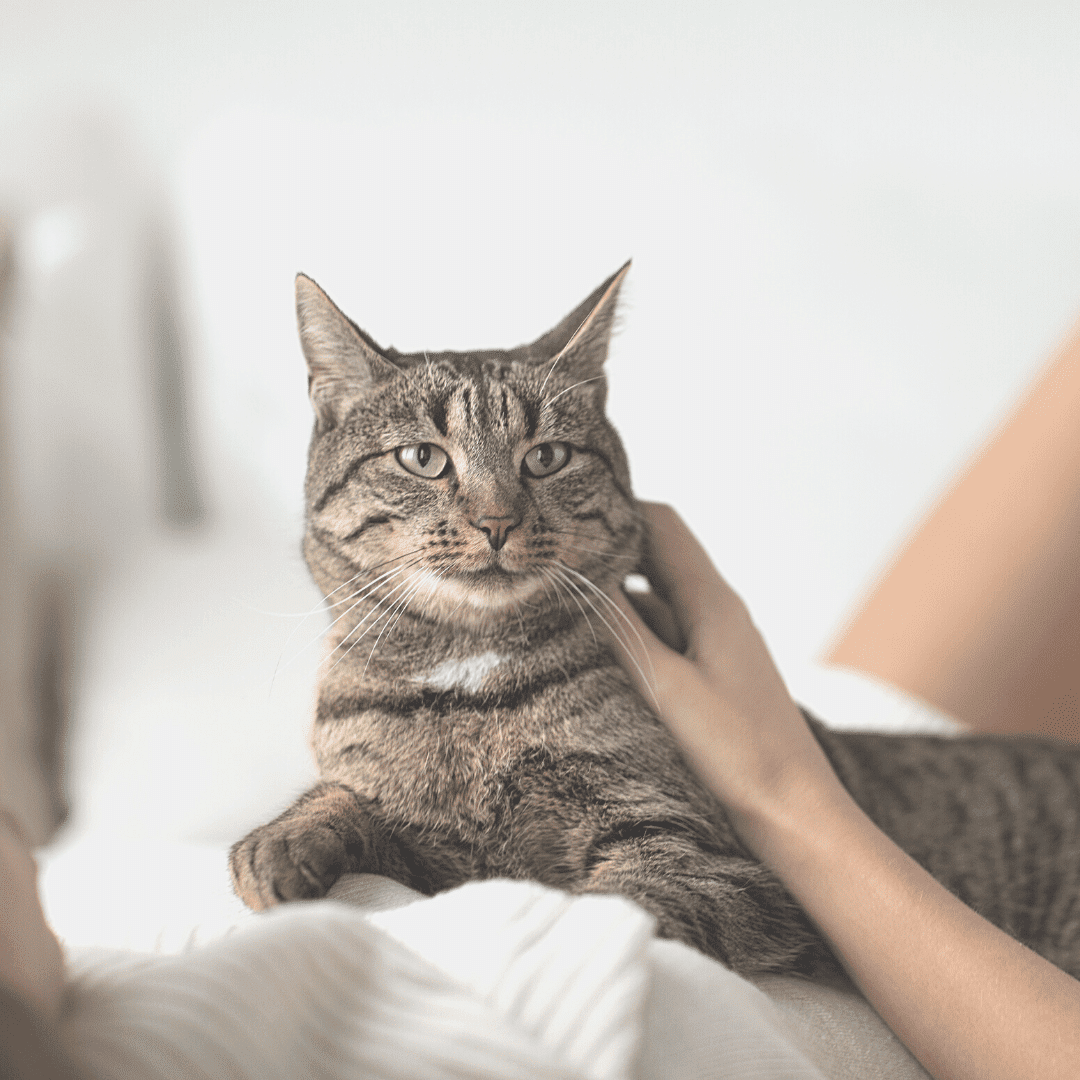We all want our kitties to be happy, but sometimes we miss our cats’ essential emotional needs at home. With just the right mix of meeting the daily needs of our indoor cats beyond food, water, litter, and an annual vet visit – these factors are essential to a cat’s emotional needs to thrive at home.
Read the top 5 emotional needs to be mindful of in your daily life with your feline friend.
1. Time
Easy one first – make time every day! Make a plan daily to spend active time with your cat, uninterrupted, in the ways they like. The time together should be full-attention time.
- Are they cuddly? Let them curl in your lap for some pets or massage.
- Are they playful? Try different toys to find their favorite.
- Do they like to hide, hunt or pounce? Set aside rewarding hunting time.
- All of the above? Rotate activities on different days. It’ll be a mental break for you and healthy for you as well.
Tip: You can groom, brush their coat, brush their teeth, clip nails, teach cat tricks in exchange for treats, or any other active time with total attention.
2. Togetherness
Just hang out. Cats often just like to be in the same room with you but not actively engaged with you. (When THEY choose, of course! )
Think of togetherness as being in the same room, doing parallel activities close by, with each of you on your own.
Be aware when they seek you out to hang out together. Following meal times are a fav time to just chill in the same room, but otherwise you may notice other patterns you hadn’t noticed before.
This is not active time when you’re interacting. You can do your own thing. Do they like to just sit on the sofa back above your head while you read or watch tv – ok, then.
TIME Tip: You can groom, brush their coat, brush their teeth, teach cat tricks in exchange for treats, or any other active time with total attention.
3. Exercise
Do it! Whether you’re actively engaging your cat in playtime together, or you set the stage for their own play, help them exercise every day.
- Install shelves at different heights on your walls for climbing and adventuring
- Be sure to have a kitty condo or cat tree for jumping, walking, changing heights
- Use an outdoor cat enclosure, or catio, if you have room for one
- I’m not a proponent of `indoor/outdoor’ cats in urban or suburban areas, but if you’ve got a country cat or barn cat allowed outside, they’re sure to get all the exercise they need already!
TIP: Keep an exercise log, daily, to keep track of your cat’s real exercise time (and print one for yourself, too – can’t hurt, right?)
4. Independence
Time for alone time. This one is especially important for multi-cat homes. Help your kitty get the alone time they need and try to be aware of patterns and their favorite places where they can recharge alone and undisturbed.
I know it, can be tough for households with more than one person, other pets, kids, or a busy household.
Ensuring independence in resting, relaxing, using the litterbox, or in cuddling with their human… any of those can reduce frustration, anxiety, or behavior issues that you may notice later.
Tips: buy an extra cat perch, extra pet bed, or extra litter box – any of those additions can give a cat just the alone time and solitary space they need.
5. Structure
Keep a schedule and routine. Pets have an internal clock just like we do, and they thrive when they know what’s supposed to happen, when. Structure is comfort. Daily repetition of the same schedule, and actions in about the same order is emotionally comforting , especially with meal times and activity time or play time.
